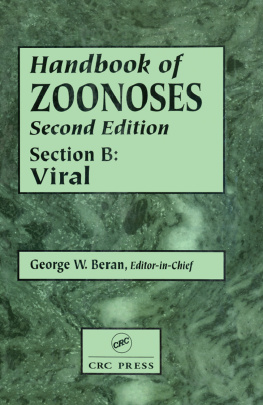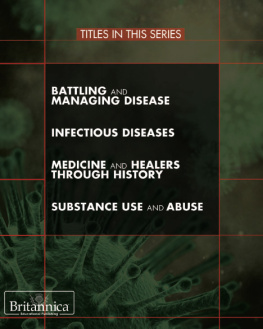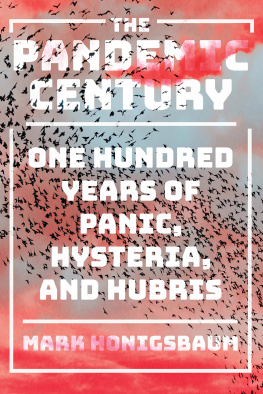The University of Chicago Press, Chicago 60637
The University of Chicago Press, Ltd., London
2019 by The University of Chicago
All rights reserved. No part of this book may be used or reproduced in any manner whatsoever without written permission, except in the case of brief quotations in critical articles and reviews. For more information, contact the University of Chicago Press, 1427 E. 60th St., Chicago, IL 60637.
Published 2019
Printed in the United States of America
28 27 26 25 24 23 22 21 20 19 1 2 3 4 5
ISBN -13: 978-0-226-64880-4 (cloth)
ISBN -13: 978-0-226-64894-1 (paper)
ISBN -13: 978-0-226-64913-9 (e-book)
DOI : https://doi.org/10.7208/chicago/9780226649139.001.0001
Library of Congress Cataloging-in-Publication Data
Names: Porter, Natalie (Natalie H.), author.
Title: Viral economies : bird flu experiments in Vietnam / Natalie Porter.
Description: Chicago ; London : The University of Chicago Press, 2019. | Includes bibliographical references and index.
Identifiers: LCCN 2019012689 | ISBN 9780226648804 (cloth : alk. paper) | ISBN 9780226648941 (pbk. : alk. paper) | ISBN 9780226649139 (e-book)
Subjects: LCSH : Avian influenzaVietnam. | PoultryVirus diseases.
Classification: LCC RA 644.16 P 674 2019 | DDC 614.5/184dc23
LC record available at https://lccn.loc.gov/2019012689

This paper meets the requirements of ANSI/NISO Z 39.48-1992 (Permanence of Paper).
Daybreak reaches your ears before your eyes on poultry farms in northern Vietnam. It is announced by low sporadic groans, short bursts of exhalation that almost hesitate to disturb the still night air. But then the grunts begin to multiply, in reverberating echoes that lengthen and converge into a single, pulsating drone as darkness gives way to dawn. It takes a naive listener several seconds to link these sounds to the chickens from which they come, and several more to pick up on the pattern of conversation as scores of hens launch weak, disjointed coos that gain in volume and frequency in an escalating struggle to be heard. As the squawk and response grow progressively louder, their cadence quickens, so that individual cries become difficult to distinguish from one another, losing themselves altogether in a frenzied banter so relentless that it denies any attempt at sleep. If nothing else, the cacophony is a call to action, an auditory assault that rouses you from bed and signals the start of a new day.
An entirely different alarm sounded from Vietnamese poultry farms in 2003, one that announced the dawn, not of a new day, but of a new era in global health. In December, at the tail end of sustained global outbreaks of severe acute respiratory syndrome (SARS), the Vietnamese government declared eleven pediatric cases of respiratory illness in the capital city, Hanoi. After ruling out SARS, epidemiologists traced the infections to the same virus that had appeared on commercial poultry farms in South Korea a month beforea novel strain of H5N1 highly pathogenic avian influenza (HPAI). Bird flu.in domestic fowl. Outbreak reports rang further and further afield, and in a matter of weeks the virus had broadcast to Japan, Thailand, Cambodia, Laos, Indonesia, and China. Echoing the reports was a growing clamor among international health officials who had never seen H5N1 infect so many countries at the same time. By February, they were sounding off about the possibility of human-to-human virus transmission in Vietnam, a terrifying prospect given the viruss 60 percent mortality rate. By spring, forty-four million birds had been slaughtered across the country.
Like early morning coos and caws, bird flu viruses move quickly through poultry flocks, increasing in volume and range as they communicate across bodily surfaces and secretions. What seems like a mild illness in one bird can erupt as a scourge in others as the rate of infection rises. Whatever its physical effects, bird flu brings unrelenting and comprehensive death. Through contagion and culling, viral communicability pushes fowl and farmers to their tipping points. Still, the real commotion surrounding bird flu stems not from its conveyance among chickens, but from its capacity to cross species. This is what microbiologists call viral chatter, and when H5N1 came into human range it alerted the world to its pandemic risk and summoned forth a new cadre of global health workers to confront it.
This book tells the story of that awakening. Since 2003, bird flu outbreaks in Vietnam have destroyed hundreds of millions of chickens and ducks, shocked the poultry economy, and killed over one hundred humans. In this corner of Southeast Asia, where many locate the epicenter of pandemic flu infection (Shortridge and Stuart-Harris 1982), bird flu is putting multiple lives and livelihoods at risk. It is also exposing the fact that human health cannot be addressed in isolation from the livestock economies in which bird flu viruses are embedded. Economies matter for two reasons. First, conditions of poultry production and consumption have facilitated H5N1 outbreaks. Second, global health programs have responded to these outbreaks by expanding their purview to include both humans and livestock, which are living beings as well as market labor and commodities. In settings where disease passes from poultry to people, global health is transforming into a more-than-human endeavor. Understanding this transformation and its implications requires exploring the economies that shape bird flu on the ground.
In what follows, I document a series of bird flu control programs from their development in policy arenas in Hanoi, through to their implementation and transformation in poultry farming communities in the northern Red River Delta and southern Mekong Delta. I chart the pathways of transnational scientists, NGO workers, state veterinarians, and poultry farmers as they labor to define and address pandemic disease risks. I also document their successes and failures in order to show that when global health interventions surface in domestic livestock economies, they must balance the agendas of state and multinational actors, and they must weigh the interests of public health against those of commercial agriculture, rural tradition, and scientific innovation.
Taken together, this book reveals an arena of global health policy and practice that is increasingly structured by the patterns of global livestock markets. This means that the standardization of life forms and the circumscription of human-animal relations, which create the conditions for market uniformity and commodity mobility, are now being implemented in bird flu control programs as a means to safeguard human and nonhuman animal health. And yet, because these interventions encounter myriad other ways of living with poultry in Vietnam, I demonstrate that their outcomes are as unpredictable as the flu virus itself. Vietnam thus surfaces in this account as a site of global health experimentationa place where the agents and subjects of disease control are redefining how to live with each other in an age of pandemic risks.
Locating the Global Pandemic
It may seem curious to consider a pandemic threat from the vantage point of a particular site like Vietnam, since what makes viruses like H5N1 so concerning is the fact that they transcend national boundaries. Pandemic threats expose uncomfortable truthsthat epidemics are not confined to the developing world, and that viruses do not discriminate between the Global North and the Global South, rich and poor. In 2003, a business traveler from China was thought to have spread SARS to guests in a Canadian hotel. Ten years later, an American was thought to have infected a Houston nurse with Ebola after visiting relatives in rural Liberia. These events show just how difficult it is to locate, much less to prevent, emerging and reemerging viruses in any particular territory. Over the last three decades, there has been a growing sense among health experts that globally mobile viruses require thoroughly global responses, responses that surpass the capacity of state institutions acting alone. In large part because of infections like avian flu, supranational, multinational, and multilateral institutions are playing a larger role in public health practice worldwide (Adams, Novotny, and Leslie 2008).












 This paper meets the requirements of ANSI/NISO Z 39.48-1992 (Permanence of Paper).
This paper meets the requirements of ANSI/NISO Z 39.48-1992 (Permanence of Paper).